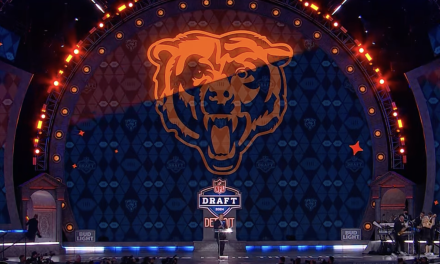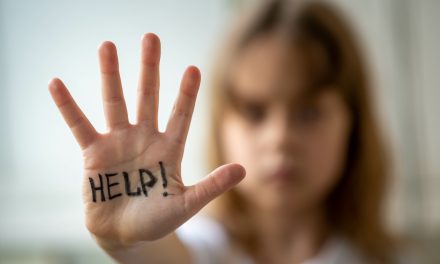The Boy Scouts Controversy: Allegations and Comparisons
The Boy Scouts of America (BSA), an iconic institution established in 1910, has undoubtedly left an indelible mark on the fabric of American society. Many believe the BSA shaped young men and boys into strong adult men. The BSA was an opportunity for young men and boys to learn about nature, survival, first aid, other skills, and most importantly, how to be a good person.

A shadow has fallen over its century-old legacy due to the series of sexual abuse allegations. The parallels between the number of abuse cases within the Boy Scouts and those within the Catholic Church, two entities far removed from each other in their missions but unfortunately linked by grave controversies.
Emergence of Allegations
While isolated allegations of abuse within the BSA date back several decades, it wasn’t until the late 20th and early 21st century that these reports began to gain significant public and media attention. Victims started coming forward, recounting tales of abuse by scout leaders and other authority figures within the organization.
The “Perversion Files”
A critical revelation came in 2012 when the so-called “perversion files” were made public. These are confidential documents maintained by the BSA, listing scout leaders and volunteers who were removed from their roles due to allegations of sexual misconduct. These files, which spanned from 1965 to 1985, provided concrete evidence that the BSA was aware of many instances of abuse but chose not to involve law enforcement, often just blacklisting the accused from future participation in Scouting.
A Culture of Secrecy: Unraveling the Veil in the BSA Scandal
Institutions, especially those with long-standing legacies, often find themselves caught between upholding their reputations and addressing the wrongs within their ranks. The Boy Scouts of America (BSA) scandal provides a glaring example of this tension, characterized by a deeply entrenched culture of secrecy.
The “Perversion Files” Unearthed
When the “perversion files” were made public, they shed light on a secretive system where the accused were often discreetly removed from their positions without alerting law enforcement or the broader community. These files, which were confidentially maintained by the BSA, spanned decades and included names of thousands of leaders and volunteers who had been barred from Scouting due to allegations of sexual misconduct.
What was even more shocking than the existence of these records was their volume and detail. The meticulous documentation of abuse allegations and the organization’s responses provided a grim insight into the efforts made to shield the institution at the expense of its young members.
Image Over Integrity

This approach has parallels in how the Catholic Church dealt with its abuse scandals. Just as priests were often moved to new parishes after allegations arose, Scout leaders were frequently just blacklisted from future participation in Scouting without any broader accountability or disclosure.
The Cost of Secrecy
The decision to keep such grave matters under wraps had several consequences:
- Perpetuation of Abuse: By not taking legal action or alerting communities, the BSA inadvertently allowed some perpetrators to find new avenues and environments to exploit, leading to more victims over the years.
- Erosion of Trust: Once the scale of the secrecy and allegations came to light, the trust that generations of families had placed in the BSA was deeply shaken. Parents began questioning the safety of an organization they once viewed as a bastion of moral guidance.
- Delayed Justice: Victims, unaware that their experiences were part of a broader pattern, often suffered in silence. The culture of secrecy denied many the chance to find solidarity, seek therapy, or pursue justice promptly.
Breaking the Silence
While the “perversion files” served as a damning indictment of the BSA’s past actions, their public release also catalyzed a shift. Victims found a collective voice, leading to broader awareness, legal actions, and policy changes to prevent future abuses.
The BSA’s culture of secrecy underscores a critical lesson for all institutions: reputational management should never come at the expense of integrity and the safety of those under their care. As society reflects on these revelations, there’s a shared hope that transparency, vigilance, and accountability will become the cornerstones of institutions that shape young lives.
Magnitude of the Crisis
As more survivors came forward and legal battles intensified, the issue’s magnitude became evident. It was reported that nearly 8,000 perpetrators within the BSA abused more than 82,000 victims over the years. This figure is alarming, especially when juxtaposed with the fact that many instances of child abuse go unreported due to fear, shame, or manipulation by the abuser.
Comparison with the Catholic Church
The abuse scandal within the Catholic Church is well-documented. The church faced accusations of not only harboring sexual predators within the clergy but also of systemic cover-ups and transfers of accused priests to different parishes, thereby giving them fresh hunting grounds.
By some accounts, the number of accused within the Boy Scouts surpasses that of the Catholic Church in America. While both institutions grapple with their individual scandals, drawing direct comparisons is complex. However, the sheer scale of allegations within two iconic organizations speaks volumes about the pervasiveness of child abuse in institutions entrusted with the care and guidance of young individuals.
Impact on the Boy Scouts
The flood of allegations and subsequent lawsuits had severe consequences for the BSA:
- Bankruptcy: Faced with an avalanche of litigation, the Boy Scouts of America filed for Chapter 11 bankruptcy in February 2020, aiming to establish a compensation fund for victims and ensure the organization’s survival.
- Reputational Damage: The controversy significantly tarnished the image of the BSA. Once viewed as a bastion of moral and character education, the trust placed in the institution was shattered for many.
- Policy Changes: The BSA underwent several changes in its child protection policies, including background checks for all volunteers, mandatory reporting of suspected abuse, and the “two-deep leadership” rule, which ensures that no scout is left alone with an adult.
A Brief Journey Through the History of the Boy Scouts
The Boy Scouts, now known as the Scouts, represents more than just an organization; it’s a movement that has shaped millions of young minds worldwide, instilling values of leadership, community, and self-reliance. Delving into the history of the Boy Scouts offers insight into a century-old institution that has adapted and grown through societal shifts, challenges, and transformations.
Origins in the British Empire
The Boy Scouts traces its origins back to the British Empire. Lieutenant General Robert Baden-Powell, a decorated soldier, was the brains behind what would become a global youth movement. After the Siege of Mafeking during the Second Boer War, where he saw young boys effectively aiding the war effort, he recognized the potential of instilling military discipline and skills in young men.
In 1908, Baden-Powell published “Scouting for Boys,” a book that combined his military experiences with his ideals for youth training. The book became an instant hit, leading to the unofficial formation of Scouting groups across Britain.
Birth of a Movement
Seeing the enthusiasm with which his book was received, Baden-Powell organized the first-ever experimental camp in 1907 on Brownsea Island. This camp is widely regarded as the birth of the Scouting movement. By 1908, the Boy Scouts organization was officially formed in Britain.
Crossing the Atlantic
It wasn’t long before the Scouting movement caught the attention of those beyond Britain’s shores. The Boy Scouts of America (BSA) was incorporated in the United States in 1910. William D. Boyce, after being aided by a Scout during a trip to London, was inspired to establish the BSA, merging it with several other youth organizations in the US.
Global Expansion and World Wars
The 1920s saw the first World Scout Jamboree, emphasizing the international nature of the movement. With the onset of the World Wars, Scouts played crucial roles, supporting communities and the war effort, further cementing their position in society.
Post-war, the movement continued to grow, with national Scouting organizations sprouting across Europe, Asia, Africa, and other parts of the world. The World Organization of the Scout Movement (WOSM) was established to unite these national entities and streamline the global movement.
Adapting to Changing Times
Over the decades, the Boy Scouts faced their fair share of challenges, from societal changes to internal controversies. As traditional gender roles were increasingly questioned, there was a push for more inclusive Scouting. In response, co-educational models were developed in various countries. The Girl Scouts, established early on as a sister organization, also gained prominence.
Modern-Day Controversies and Changes
In recent decades, the Boy Scouts, especially the BSA, have faced a series of controversies related to their stances on LGBTQ+ rights, religious affiliations, and allegations of abuse within the organization. These issues led to extensive legal battles, policy changes, and reputational challenges.
Recognizing the need to adapt and be more inclusive, the BSA announced in 2017 that it would accept girls into its ranks, a historic change. By 2019, the “Boy” was dropped from the older youth Scouting program’s name, now known simply as Scouts BSA.
The Legacy of the Scouts
Despite the challenges, the legacy of the Scouts as a positive force for youth development remains intact. The organization’s core tenets — loyalty, bravery, helpfulness, and reverence, to name a few — have produced generations of civic-minded individuals. Merit badges, camping trips, and community service projects continue to mold young people into responsible, self-reliant individuals. Prominent figures, from Neil Armstrong to Barack Obama, have their roots in Scouting, further testament to the organization’s far-reaching influence.
With its rich tapestry of history, the Boy Scouts stands as a testament to a movement’s power to shape society. From its military-influenced beginnings in the British Empire to its evolution into a modern, inclusive youth organization, the Scouts have shaped and been shaped by the times they’ve existed. As they move into the future, they carry a legacy of community service, personal development, and global unity.
The Stigma of Sexual Abuse and Men
Sexual abuse is a grave societal issue, impacting individuals regardless of gender, age, or socio-economic background. While the trauma of abuse is universally devastating, male survivors face distinct challenges rooted in societal norms, expectations, and stereotypes. The Boy Scouts of America (BSA) scandal is a poignant illustration of how institutions can inadvertently create environments ripe for predators, disproportionately affecting young boys.
The Stigma Surrounding Male Victims
The overarching narrative in many societies has historically portrayed men as protectors, aggressors, or, at the very least, individuals not typically viewed as ‘victims.’ This stereotyping creates several barriers for male survivors of sexual abuse:
- Machismo and Masculinity: Traditional notions of masculinity equate ‘manliness’ with strength, stoicism, and emotional restraint. A male admitting to being a victim of sexual abuse can be seen as an admission of weakness, potentially leading to ridicule or diminished status.
- Misunderstandings about Male Sexuality: There are misconceptions that men always want sex or that they can’t be forced against their will. Such beliefs invalidate male victims’ experiences, suggesting they must have been willing participants or even enjoyed the abuse.
- Fear of Being Misunderstood: Concerns about being mistakenly labeled as homosexual, or the false perception that abused individuals are more likely to become abusers themselves, can further dissuade men from coming forward.
The BSA: A Breeding Ground for Predators
The BSA, an institution established to mold young boys into responsible and moral men, unfortunately, became a setting where vulnerabilities were exploited. Several factors contributed to this:
- Trust and Reverence: The BSA has long been a respected institution. Parents entrusted their children to scoutmasters, believing in the organization’s wholesome values. This inherent trust provided predators with cover.
- Close Proximity and Opportunities: Camping trips, sleepovers, and other activities offered perpetrators close and often unsupervised access to potential victims.
- A Culture of Secrecy: The BSA’s initial response to allegations was to handle matters internally, creating “perversion files” instead of immediately alerting law enforcement. This culture protected the organization’s image and shielded the abusers.
The Ripple Effects
While the BSA scandal highlighted systemic flaws within one organization, it reflects broader societal issues. Many male victims, whether within the BSA or elsewhere, grapple with the trauma in silence, fearing judgment or disbelief. This silence can lead to long-term psychological issues, including depression, anxiety, substance abuse, and suicidal tendencies.
Are BSA Safe to Participate in Now?
The Boy Scouts of America (BSA) has made significant changes in recent years in response to the numerous sexual assault allegations and lawsuits. Their goal has been to ensure the scouts’ safety and regain the trust of families and the general public. While no organization can guarantee complete safety, several measures have been taken by the BSA to address concerns:
- Youth Protection Training: The BSA has instituted mandatory Youth Protection Training for all adult leaders and volunteers. This training is designed to educate adults about the signs of child abuse, how to prevent it, and how to report it.
- Two-Deep Leadership: This rule requires that no boy be alone with an adult leader during any scouting activity. Two adults must always be present, and one must be over 21. This reduces opportunities for misconduct.
- No One-on-One Contact: In line with the two-deep leadership principle, one-on-one contact between adults and scouts is prohibited unless the adult is the scout’s parent or guardian.
- Mandatory Reporting: BSA policy mandates that any suspicion of child abuse must be reported to law enforcement. This is a change from past practices, where internal solutions were often sought.
- Background Checks: Comprehensive criminal background checks are now mandatory for all adult leaders and volunteers before they can participate in Scouting.
- Barriers to Abuse: The BSA has developed guidelines restricting certain activities and situations that could put scouts at risk. This includes appropriate camping arrangements, restroom policies, and more.
- Enhanced Whistleblower Policies: Measures have been implemented to ensure that those who report suspicions or knowledge of abuse can do so without fear of retaliation.
- Regular Review and Updates: The BSA has committed to regularly reviewing and updating its youth protection policies in collaboration with experts in child safety, law enforcement, and child psychology.
- Bankruptcy and Compensation: The BSA filed for Chapter 11 bankruptcy in 2020 to create a compensation fund for victims of past abuse. This was a move to address the lawsuits’ financial fallout and ensure some form of restitution for victims.
It’s important to note that while these measures significantly enhance the safety mechanisms within the organization, the effectiveness of any policy is often tied to its consistent enforcement and the integrity of local leadership. Parents and guardians considering the BSA for their children should stay informed, be active in their children’s activities, and maintain open lines of communication with their children to ensure their safety and well-being.
While the BSA has made substantial strides to improve safety and prevent future incidents, individual comfort with the organization will vary based on personal perspectives and experiences. The documentary did express that there is no way to make the organization safe, as with any entity. However, with it’s history now on blast, people should rightfully question if the organization is safe today. Victims and documentary crew members said that they do not believe they can trust BSA.
One victim even explained that it takes years for a man to come forward about the allegations and think about the boys in the BSA right now. They might be suffering in silence and will never share their stories or won’t until 20 years later. They also expressed that they could never and do not trust the BSA. That all the steps the BSA is allegedly taking listed above to keep boys and young men safe is just an illusion to keep the organization going. That says all you need to know.
An End of an Era

The BSA Oath or Promise has not upheld it’s values. Here is a reminder of what the BSA pledge is. The pledge is:
Boy Scout Oath (or Promise): To do my duty to God and my country, obey the Scout Law, help other people at all times, To keep myself physically strong, mentally awake, and morally straight.
It is safe to say the BSA has not upheld its own pledge. We hope that all 82,000-plus sexual assault survivors from the BSA find the peace and justice they deserve.
































South Florida Media Comments